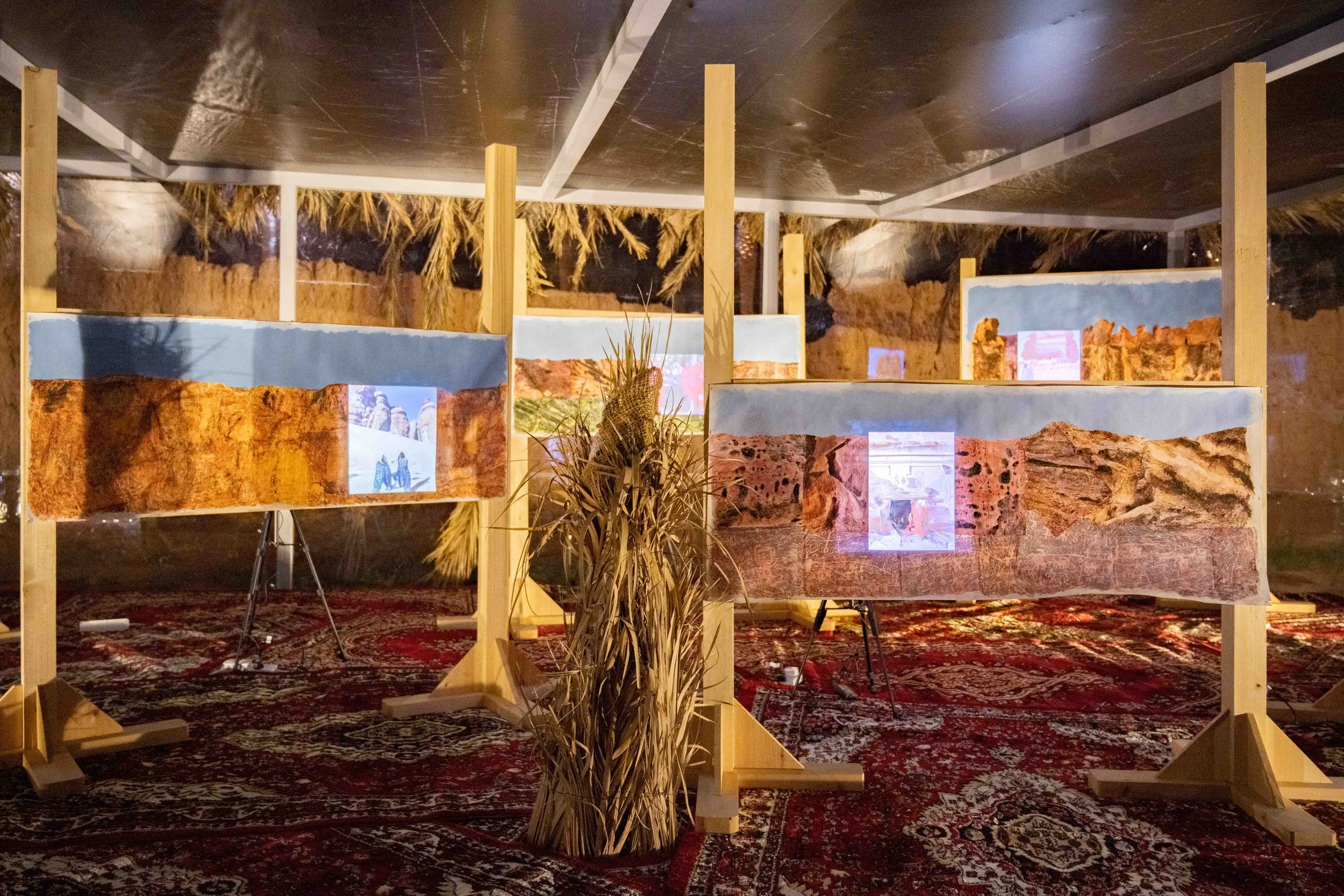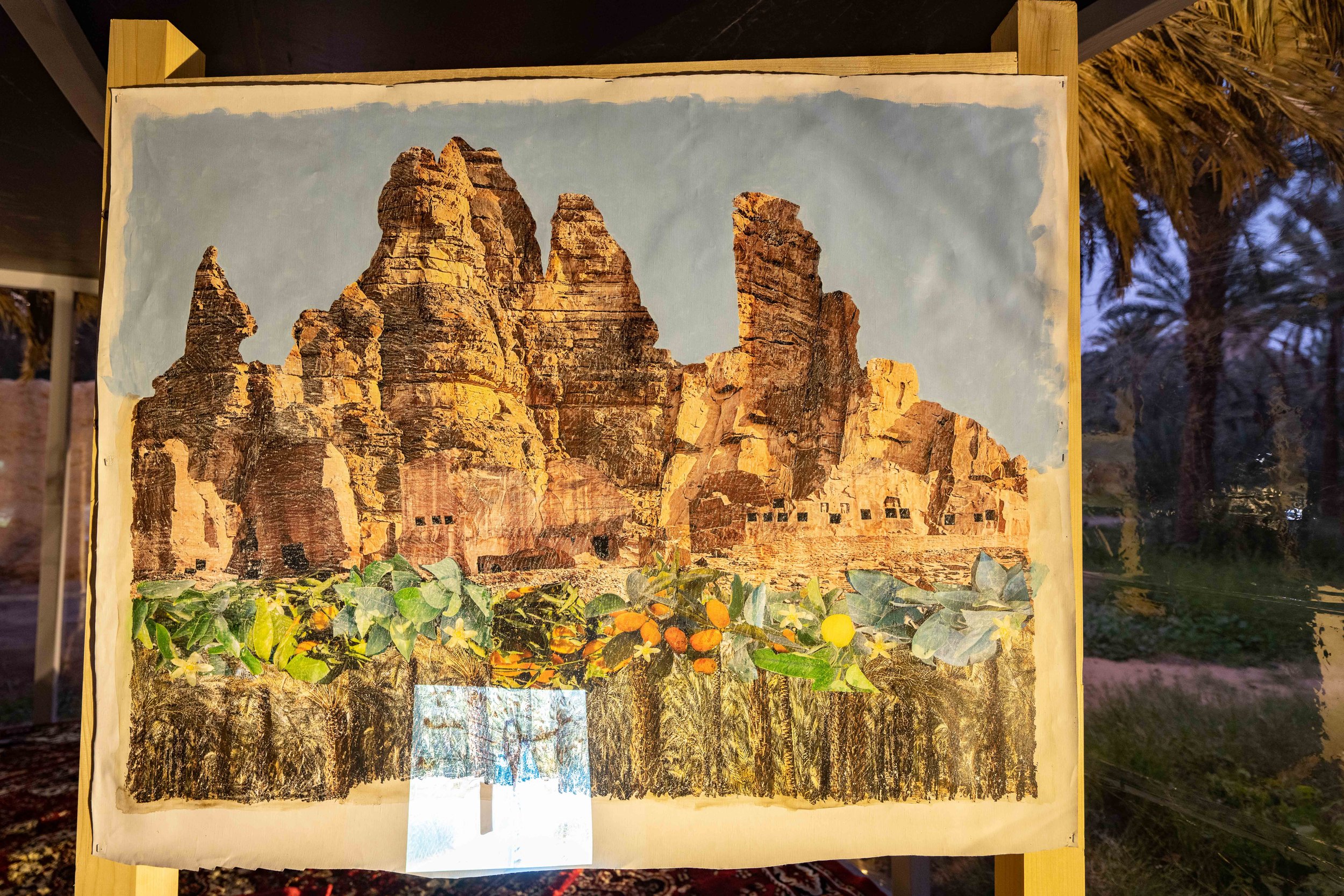“The millennial history of AlUla and its enduring archaeological and folk records convey to curious listeners and onlookers many chronicles of great kings and priests and several stories of the quotidian lives of its people. Few, however, impart any information about those of its women. Almost invisible in the narratives of the past, female presence is mentioned in only a few anecdotes that Daniah Al Saleh seeks to speculate upon, catalogue, interpret, and relay. Where historical evidence falls short, alternative realities begin to take hold: Augmented by machine-learning networks and the curated dataset of the artist, the landscapes of AlUla become receptacles in which her research culminates, implanting amorphous displays of real women in painted panels of liminal terrains.
The title of the work, Hinat, refers to the name of the Nabataean woman whose remains were found in Tomb 117 at the archaeological site of Hegra. “This is the tomb which Hinat daughter of Wahbu made for herself and for her children and her descendants forever”: this explicit mention of Hinat is a rare instance of a categorical allusion to a woman in the history of the region. With an installation that mixes different imaging techniques (photographic transfer, painting, video, and algorithmic generation) across several panels, Daniah Al Saleh imagines Hinat alive, forever immortalized in a world where memories, fiction, and reality can meet. Like ghosts finally making their return, the anonymous women’s silhouettes, and the fabrics they weave, are distorted as if in a blurred memory that nevertheless manages to embody their histories and their discreet presence.”








